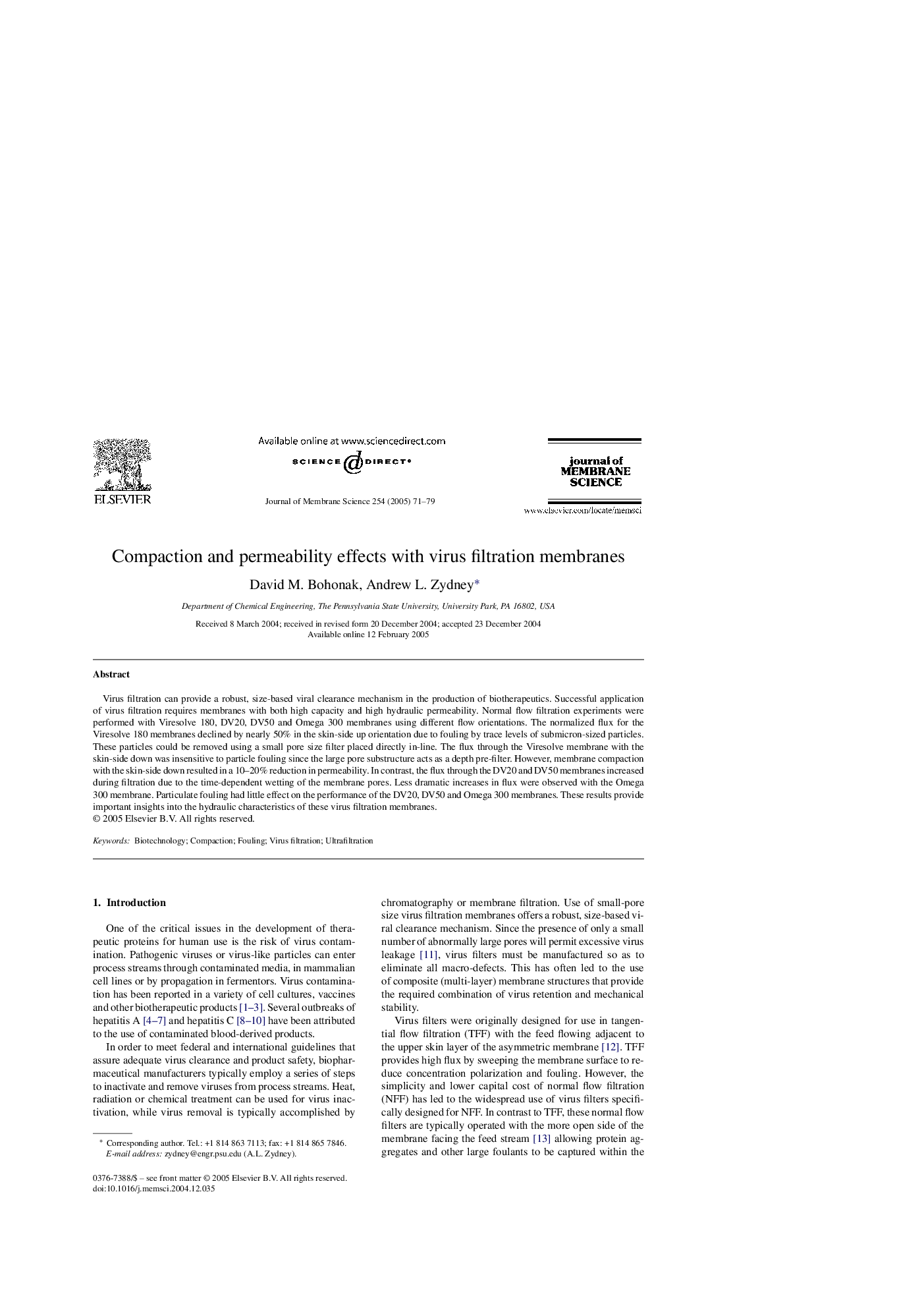| Article ID | Journal | Published Year | Pages | File Type |
|---|---|---|---|---|
| 9684869 | Journal of Membrane Science | 2005 | 9 Pages |
Abstract
Virus filtration can provide a robust, size-based viral clearance mechanism in the production of biotherapeutics. Successful application of virus filtration requires membranes with both high capacity and high hydraulic permeability. Normal flow filtration experiments were performed with Viresolve 180, DV20, DV50 and Omega 300 membranes using different flow orientations. The normalized flux for the Viresolve 180 membranes declined by nearly 50% in the skin-side up orientation due to fouling by trace levels of submicron-sized particles. These particles could be removed using a small pore size filter placed directly in-line. The flux through the Viresolve membrane with the skin-side down was insensitive to particle fouling since the large pore substructure acts as a depth pre-filter. However, membrane compaction with the skin-side down resulted in a 10-20% reduction in permeability. In contrast, the flux through the DV20 and DV50 membranes increased during filtration due to the time-dependent wetting of the membrane pores. Less dramatic increases in flux were observed with the Omega 300 membrane. Particulate fouling had little effect on the performance of the DV20, DV50 and Omega 300 membranes. These results provide important insights into the hydraulic characteristics of these virus filtration membranes.
Related Topics
Physical Sciences and Engineering
Chemical Engineering
Filtration and Separation
Authors
David M. Bohonak, Andrew L. Zydney,
